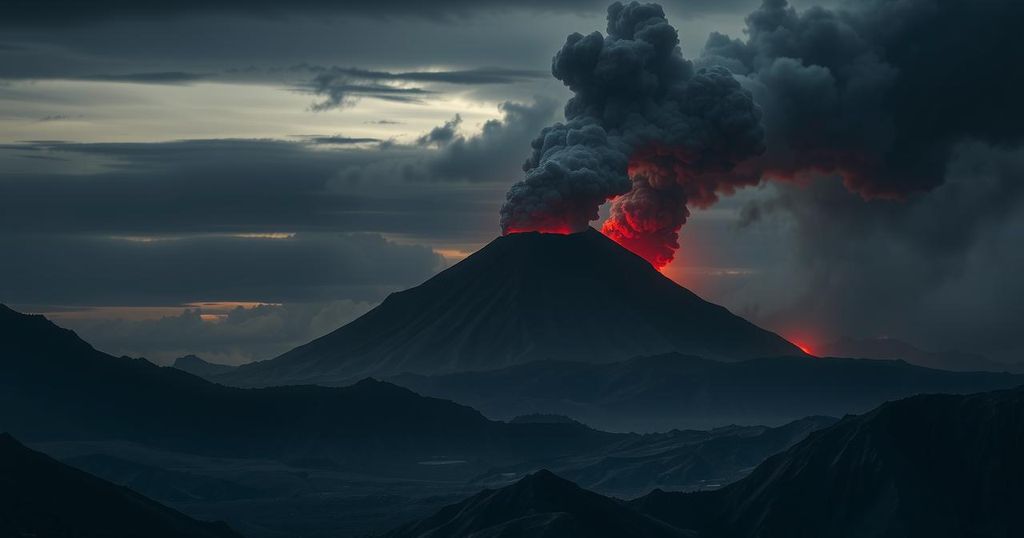Increased Seismic Activity at Mount Spurr Indicates Possible Eruption
Mount Spurr in Alaska shows increasing seismic activity, prompting geologists to consider a possible eruption soon. The Alaska Volcano Observatory has identified several scenarios, ranging from a mild eruption to more explosive events. Monitoring continues through various advanced techniques to better understand Mount Spurr’s volcanic behavior and potential impacts, particularly on air traffic.
Geologists are actively monitoring Mount Spurr, located in the Aleutian Arc of Alaska, due to noticeable volcanic unrest. The Alaska Volcano Observatory (AVO) has indicated that an eruption could occur in the coming days or weeks as they track increased seismic activity beneath the volcano. Mount Spurr, a stratovolcano covered in ice and snow, has erupted twice in its historical record, specifically in 1953 and 1992.
These historical eruptions originated from the Crater Peak flank vent rather than directly from Mount Spurr itself. According to the US Geological Survey (USGS), both eruptions were relatively small but explosive, resulting in ash dispersal over southeast Alaska and even across the North Atlantic. The eruptions also prompted pyroclastic flows that caused volcanic debris flows, or lahars, affecting the nearby Chakachatna River drainage.
Recent seismic activity has escalated significantly since April 2024, with researchers recording approximately 30 earthquakes weekly beneath the volcanic structure. While increased seismicity does not guarantee an eruption, a spike in earthquakes has been observed since October 2024, culminating in a weekly detection of about 125 seismic events as of February 6. The most significant earthquake in this period registered a magnitude of 2.9.
In a statement issued on February 6, the AVO indicated that the current unrest suggests that magma may have intruded into the volcano’s crust. The AVO proposed several potential scenarios for the volcano’s future activity. The first scenario posits that magma may not surface, leading to a decrease in seismic activity over several months.
Another possible scenario involves an eruption similar to those witnessed in 1953 and 1992, with one or more explosive events that could generate significant ash clouds and pyroclastic flows in the surrounding uninhabited areas. Additionally, there exists a less likely possibility of an eruption from Mount Spurr’s summit, which historically has not occurred.
An eruption from the summit could be highly explosive, potentially melting glacial ice and creating lahars and other hydrologic hazards. Fortunately, there are no major populated areas that would be directly affected by volcanic flows; however, AVO’s lead, Matt Haney, expressed concerns regarding potential disruptions to nearby air traffic resulting from such an eruption.
The monitoring efforts are comprehensive, utilizing webcams, seismic networks, ground deformation stations, and infrasound sensors. These data collection methods aim to ascertain whether an eruption at Mount Spurr is imminent, enhancing preparedness against possible volcanic threats.
In summary, Mount Spurr exhibits signs of increased volcanic activity, leading to heightened monitoring by the AVO. Potential eruption scenarios range from mild events similar to prior eruptions to more significant explosive incidents. Researchers are committed to tracking the volcano’s activity through various technological means to gather crucial data. While the risks to nearby towns are minimal, flight disruptions could occur during significant volcanic events.
Original Source: www.iflscience.com




Post Comment